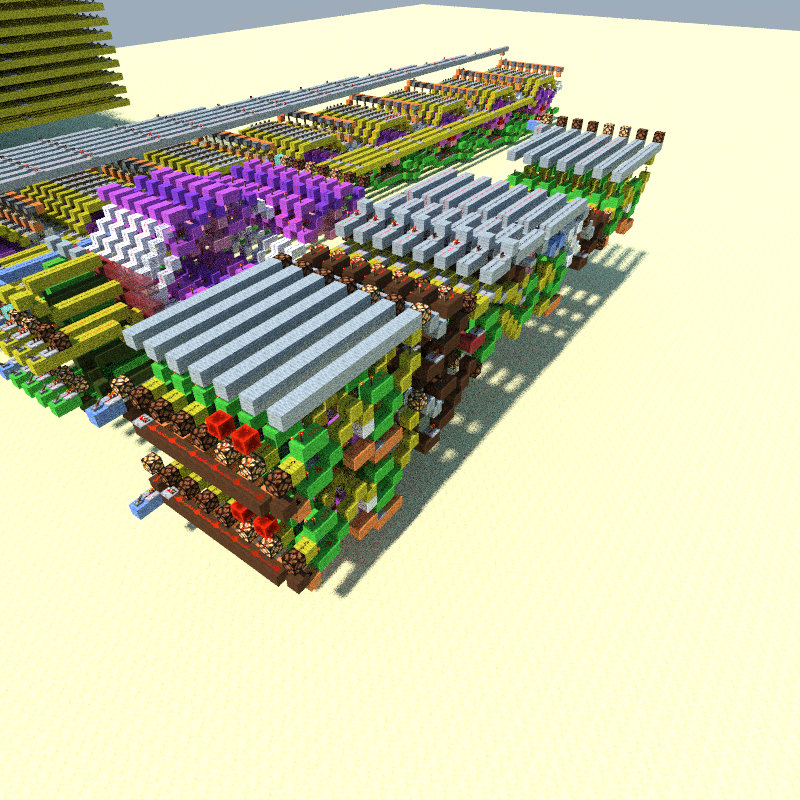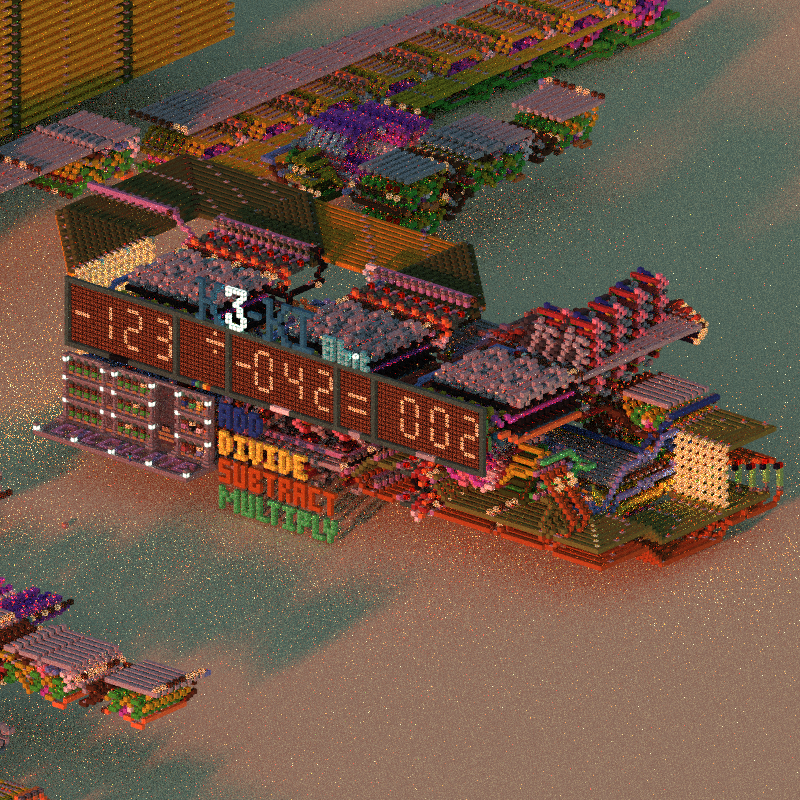This post is about the redstone world I worked on until August 2018, which is available from the link above. It is filled with my experiments with the redstone system in Minecraft, exploring how it can be used to simulate basic electronic circuits, even building up to primitive computation and memory.
I thought of redstone as a way to simulate and learn about electronics -- clearly more practical and affordable than buying physical wires and breadboards! Ultimately it (re)sparked my interest in computers, confirmed my disdain of working with physical circuits, and so pushed me to pursue CS at university.
Concepts such as converting binary to binary-coded decimal, logic gates and volatile memory were useful in the engineering subjects I took years after this, and having (virtual) hands-on experience really helped.
The world itself had a few major projects, and some details might be missing since I'm writing this post long after 2018.
K3-KI
In June 2017, I finished K3-KI, an 8-bit redstone calculator in Minecraft.
I took literal notes from the enlightening videos of Newomaster. I wouldn't have been able to even start this project without his videos.
It contains the 4 basic arithmetic functions, implemented in a 'combinatorial' way, which as I understand means input is turned into output in a single processing step -- K3-KI does not have a clock like a computer processor does.
Addition and Subtraction
To start, I copied a compact design for a full adder (with XORs, carry in and out), then extended that to work with 8-bit binary numbers, this became the Addition module.
The Subtraction module is exactly the Addition module, except with additional negation steps to the minuend and the subtrahend (cool words).
When working with negative numbers in the Two's complement form, addition and subtraction with negative numbers just works without further modification to the Addition/Subtraction module:
Multiplication
The Multiplication module is actually 5-bit and works using bit-shifting.
It's a trick one would see in low-level programming: multiplying x by 4,
which is 2 to the power of 2, is the same as shifting x in binary by 2
positions. The 5-bit limitation is to avoid overflow and the hardwired
bitshifts can be seen physically in the module itself, namely the staggering
of the top and bottom set of wires:
Division
By far the ugliest implementation, the Division module is my own bad design, essentially a hard-coded form of long division as taught in elementary school, with subsequent subtractions and remainder checking. Unsurprisingly, division by zero is also handled incorrectly.
Input and Output
The Input module is made up of three unintuitive keypads, for the first and second argument, and the operation. These two numbers are each saved in 8-bit volatile memory module, then the computation is done by directing those two numbers to the desired module. The wiring for this redirection makes up the bulk of the whole structure.
The Output module contains 7-segment decimal displays for the numbers,
supporting -127 and 128 inclusive, as well as a binary to BCD converter.
Division also truncates:
More pictures are on the Planet Minecraft link at the top of this post.
DENTA9
After finishing K3-KI, the idea of expanding the breadth of calculations to 16-bit lingered. It would be necessary to use a 'sequential' approach to do this since it would be too massive and slow if it were just a blown-up version of the 8-bit calculator. So I built DENTA9 -- another play on words in Japanese...
How I understood 'sequential' was that processing input and output can be done in multiple processing steps, and the intermediate results stored in memory. This would be more similar to a typical processor model, with a running clock and its own memory.
The same 4 arithmetic functions are present as in K3-KI, but it is far less user-friendly. It does not have proper input/output, cannot handle negative numbers well and is very slow. It consists of two accumulators: two adders that are looped and have a 16-bit memory module. The first accumulator controls the number of times the second accumulator goes, much like a double for-loop.
Addition/Subtraction
Addition and subtraction are as in K3-KI, they are done with a full adder in one step.
Multiplication/Division
Multiplication is simply addition multiple times. The user would input a number (the first factor), then the number of times to add that to 0 (the "loop num", which would be the second factor).
Division would be the same, except it would subtract multiple times, and might have a remainder.
Other redstone projects
Two other highlights in the redstone world were a 16x16 sketching machine and a 6-bit video player (more like a slideshow machine):








